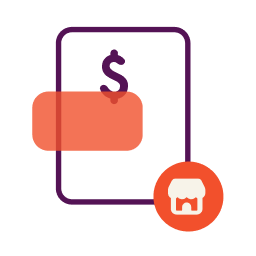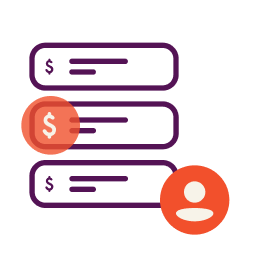Every Friday, Margo Burr, a public speaking trainer and Founder of B7 Media Relations, reviews her business finances. Using her accounting software and spreadsheet, she spends about 30 minutes checking in on her business spending and revenue. She also sets quarterly goals and checks in monthly.
“It holds me accountable,” she says, “and helps me see in real time what I spent.”
Whether you are a small business owner with a startup, or have several years under your belt, regular financial check ups can help you understand how your business is doing financially, and reach your goals faster.
Why Is a Financial Check-up Important?
A financial check-in helps keep you on track with your business or personal finances.
There are many reasons why small business owners should plan for regular financial reviews:
Track performance: See how your business is doing over time. Lenders will often look at revenue to see whether it’s increasing or decreasing; that’s something you should know too.
Spot trends: Look for patterns in your income and expenses. Costs can creep up over time, for example, and you need to be aware of that.
Steve Chou, an ecommerce business owner and host of the My Wife Quit Her Job podcast talked recently about how popular seller platforms are raising fees. Those fees cut into profits, and what used to be a very profitable business may quickly turn south for businesses not aware of those rising expenses.
Catch problems early: Find and fix issues before they become big problems. Is a client paying slowly, for example? You’ll want to know that so you can adjust terms before a large unpaid balance builds up.
Make better decisions: Very few business owners never have to make a tough financial decision. With up-to-date financial info, you’ll be better prepared to make changes in your business.
Plan for the future: You’ll often hear advisors talk about 1,3, or 5 year goals. Regular reviews help you set these goals—and make them realistic.
Manage cash flow: The timing of your income and expenses can be just as important as how much you earn and spend. This review will help you better understand your cash flow.
Prepare for taxes: Most small businesses operate as a “pass through” entity, which means you report income on your personal tax return. That usually means you must make quarterly estimated tax payments.
Get a loan: If you want to get a small business loan, line of credit, or other type of financing, you’ll likely need to provide financial information. Some financing options only require business bank statements or statements from your payment processor. Others will require detailed financials.
Reduce stress: Operating without knowing where your finances stand may feel like it works temporarily, but over time it’s stressful and can backfire.
Burr says she initially reviewed her finances monthly, but now she reviews them every week on what she calls “financial Fridays”. “When I first started I would look at finances monthly,” she explains. “That was very unhealthy and I actually mismanaged money.”
Why Would I Need a Small Business Financial Review?
Reviewing your finances regularly gives you insights into where your money is going and helps you course-correct when needed.
“As business owners, if you’re making a lot you can lose a lot and go broke by not paying attention to the small purchases,” warns Burr. “The small purchases that add up.”
Looking for ways to make your business more cost-effective is just one reason for this review, though. You may find opportunities to streamline your business while also achieving cost savings.
One common example in recent years: many businesses are reducing office space by offering hybrid or remote work. This can cut down on overhead costs, while providing a perk that may help attract or retain full-time employees.
Improving your business strategy is another reason to review your business finances. A review may uncover the need to invest in a different marketing strategy, for example, and hire freelancers to help build a social media marketing strategy.
How Can I Prepare for My Small Business Financial Review?
“Financial goals are set by reverse engineering,” suggests business owner Cassandra Hill. She’s CEO of Holistic Living Consulting, a company that facilitates the emotional and mental well-being of Black women entrepreneurs while empowering them to achieve financial stability.
“The initial step is determining how much capital is needed for operations and reserve,” she explains. “Once this number is determined I examine products and services then calculate how many sales are needed to reach (my) goal. This goal is checked weekly.”
One of the best ways to prepare for a financial review is to keep your business bookkeeping up to date. Accurate bookkeeping will provide the information you need to review your finances, and accounting software makes it easy Also helpful:
Use a business credit card
Rather than a personal credit card, use a business credit card or charge card for purchases. This makes it easy to see business expenses at a glance.
Use a business checking account
A business bank account should be “command central” for your business finances. If you use other types of accounts to get paid (like PayPal, Amazon, Venmo, or CashApp), consider transferring those funds into your business bank account so you have a clear picture of how much money your business brings in.
What Assumptions Are Essential for Creating an Accurate Financial Forecast?
Each business is different, so the metrics you’ll need to track may vary. An ecommerce business owner, for example, will need to track inventory while a consultant may need to track time.
Here are some common metrics you’ll want to consider; again, depending on your business model.
1. Sales growth rate: Try to anticipate how much your sales will increase over chosen time frames.
2. Cost of goods sold (COGS): Get clear on how much it costs to produce your products or services.
3. Operating expenses: Budget for fixed expenses or semi variable expenses like rent, salaries, insurance premiums, utilities, etc.
4. Pricing strategy: Consider whether you need to adjust prices.
5. Seasonality: Understand how cash flow will be impacted during both busy and slow periods.
6. Customer payment patterns: Estimate how quickly customers will pay their bills and evaluate if you need to change payment terms to speed up payments.
7. Supplier terms: Plan for when you’ll need to pay your suppliers and explore whether you get negotiate better payment terms (going from net-15 to net-30 for example).
9. Tax rates: Make sure you’ve set aside enough money for periodic and annual tax payments.
10. Capital expenditures: Plan for big purchases like equipment or property.
11. Funding needs: Estimate if and when you’ll need a small business loan or investment capital.
12. Industry trends: Evaluate changes in your industry (such as the impact of AI) and how they may affect your business.
13. Market conditions: Try to anticipate how the overall economy might affect your business. (This one is especially challenging but worth thinking about.)
No one can predict the future with complete accuracy, so consider multiple scenarios – best case, worst case, and most likely.
How To Do a Quarterly Financial Check-in
A quarterly financial checkup can be a solid opportunity to practice goal setting and financial planning for your small business.
“I set and check my financial goals quarterly to ensure that I’m working towards a realistic goal,” says Omolola Taiwo, CEO of Omi Wellness & Counseling, PLLC, a virtual mental health therapy practice specializing in integrative mental health and trauma informed care for adults, teens, and couples.
If you have higher expenses one quarter, a financial check up can help you identify the need to trim business expenses or increase revenue so you can still reach your goals.
Here are some activities that can be helpful in this review.
- Set key performance indicators (KPIs) and review their metrics. This could be the cost of goods sold (COGS), gross margin, inventory turnover, return on ad spend (ROAS), new users, or any other metrics you want to keep an eye on.
- Review and project your cash flow. Make sure you set a cash flow budget and review it against actual at least on a quarterly basis. Remember “cash is king”!
- Record expenses. Remember that many business expenses can help reduce your tax liability. Tracking your expenses as you go (or at least quarterly) trims the headache at tax season. Don’t forget to save the receipts in case of an IRS audit.
- Check for fraud. Reviewing your business credit and business transactions can help you identify suspicious activity.
- Review and set your budget. Consider your revenue and business costs for the previous quarter and to tweak your budget for the upcoming quarter. Don’t forget about upcoming quarterly estimated tax payments.
- Review recurring expenses. You may be able to save money by canceling apps or subscriptions you don’t need, or by switching to quarterly or annual payments for those you do want to continue.
- Review retirement savings. Self-employed people often contribute to their own retirement. Plan to deposit tax-advantaged contributions to your retirement account at least quarterly (if not monthly or bi-weekly).
Read: A Guide to Variable Expense Management
How To Do a Half Yearly Financial Check-in
A mid-year financial review can be similar to a weekly, monthly or quarterly check in. In addition to your usual review, you may also want to:
Update your budget. You may need to account for large, one-time, or unplanned expenses.
Increase tax payments. You may need to increase quarterly tax payments or withholding if your revenue is higher than anticipated.
Pay off debt. If you have additional profits, you may want to use it to pay down debt faster and reduce the cost of interest.
Read: Getting Your Small Business Out of Debt
How To Do a Yearly Financial Check-in
Another year in business? Congratulations! Make sure you celebrate your success—but also perform an annual financial check-in to secure your future.
- Review your income statement, balance sheet, and cash flow. These are the three important financial statements for any business. Your business mentor, or tax professional should be able to help you if you don’t know how to do this yourself.
- Consider business goals you’ve already set and measure your progress for the year. If you have yet to set financial goals, analyze your data over the course of the year, and use this information to set future goals.
- Separate your goals into two categories: short-term and long-term. Short-term goals may be weekly, monthly, quarterly or annually. Long-term goals may encompass 2, 3, 5, or 10 years. Make these goals achievable and develop a road map for how to get there. You can even use this opportunity to revise your business plan, which will eventually evolve.
- Take stock of your assets and liabilities. Make sure you’re protected through business insurance.
- Review your debts. Know where you stand with lenders and review interest rates on loans. If you have improved your credit, you may want to refinance to reduce interest rates.
- Set updated goals for your emergency fund. If you already have an emergency fund, you may want to increase it to account for inflation.
- Plan ahead to file your taxes. Make sure you file your taxes on time. This will help you to avoid tax penalties
- Check your business credit. Review your business credit to see if your business credit scores are strong. If you haven’t yet built business credit, learn how to establish business credit.
How To Improve the Cash Flow of Your Small Business
Cash flow refers to the money coming into your business, and the money it spends, and healthy cash flow is essential for a successful business.
Managing cash flow involves managing key financial aspects of your business.
Managing operational expenses is one key to improving cash flow. This may mean negotiating longer repayment terms with vendors and suppliers, reevaluating spending and taking cost cutting measures, or eliminating unnecessary spending.
On the revenue side, your business may be able to improve cash flow by increasing sales, reducing returns, or collecting payment more quickly.
Strategies like collecting payments upfront, invoicing promptly, offering early payment discounts, and making it easy for customers to pay can significantly improve cash inflow. Additionally, investing in marketing and sales efforts, such as exploring new markets, improving online sales, and adjusting pricing, can boost revenue and cash flow.
Read: 24 Ways to Improve Your Business Cash Flow
Another way to improve your cash flow is to get organized financially. Use tools to monitor your cash flow real-time so you can take action.
Leverage business credit cards or lines of credit to help smooth over fluctuations in cash flow.
The Bottom Line on Business Financial Check-ins
Regardless of the frequency you choose, what matters most is that you’re aware of your business’ financial health on a regular basis and making adjustments as you go.
Review budgets, set business financial goals, protect your assets, and take other steps to ensure your financial wellbeing—now and in the future. Use the checklists adove to create and form your own, personalized financial check-in plan that caters to your unique business needs.
Automation can make it even easier. Nav can help you build, manage and monitor your business credit, and find financing when you need it. Nav Cash Flow Health can help your business monitor and analyze your cash flow across all your business accounts so you can make timely changes.
FAQ on Financial Check-Ins
Do you have an emergency fund?
Even a high cash flow business will experience times when cash flow is tight. An emergency fund will make it a lot less stressful.
If your business isn’t making enough money to set aside money for savings, focus on increasing revenue while finding ways to lower costs.
What are the key components of a small business financial health checkup?
Think of a financial health checkup for your small business like you would a checkup with your doctor. Just as a doctor looks for areas of concern with your health, a financial checkup looks for ways your business could be healthier.
It’s about taking a good, honest look at how money is flowing in and out of your business, what your business owns (assets), what you owe (debt, accounts payable), and how much profit you’re making.
This checkup helps you understand if your business is in good shape or if it needs to improve its financial fitness.
A good financial checkup also helps you set goals for the future.
Are you making the most of your financial resources? Are you keeping up with your taxes? How much does your debt cost your business?
By regularly checking in on these things, you’re giving yourself the power to make smart choices for your business. It’s all about staying on top of your finances so you can grow your business and reach your goals.
Read: Cost of Debt: How to Calculate Cost of Debt
How often should you do financial check-ins?
Many business owners review their finances once a year at tax time. But that’s rarely enough. A quarterly, half yearly. monthly or even weekly review may be a smart move for your new or growth-oriented small-to-medium-sized business. Plus, in a fickle pandemic-era economy, doing so more often ensures your continued success through times of high inflation and frequent threats of recession.
Finding your flow with financial check-ins takes time. You may find that weekly is too often for you, or you may find that your usual annual check-in is not enough. Be flexible and adjust as needed.
How far out should you set short-term goals and long-term goals at a financial check-in?
Your time frame for short-term and long-term goals may vary. In general, short term goals may be six months to one or two years. Goals with longer time frames may be 2–5 years out. The time frame may not be as important as setting clear, simple, achievable goals.
What are some examples of financial goals for business owners?
In the short term, you may set a specific goal for sales and revenue, cost reductions, profit margins, debt-to-income ratio, cash flow management, and more.
Long-term financial goals may include productivity, brand recognition that translates to conversions, and other bigger goals.
This article was originally written on August 9, 2024.




Have at it! We'd love to hear from you and encourage a lively discussion among our users. Please help us keep our site clean and protect yourself. Refrain from posting overtly promotional content, and avoid disclosing personal information such as bank account or phone numbers.
Reviews Disclosure: The responses below are not provided or commissioned by the credit card, financing and service companies that appear on this site. Responses have not been reviewed, approved or otherwise endorsed by the credit card, financing and service companies and it is not their responsibility to ensure all posts and/or questions are answered.